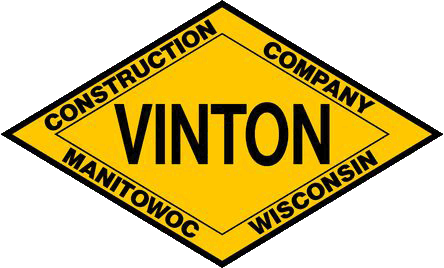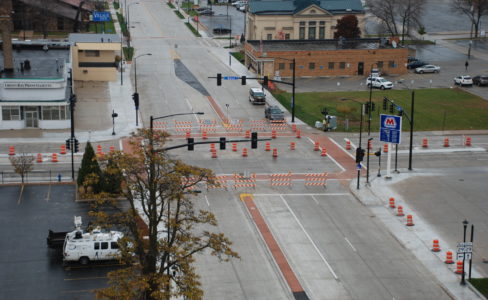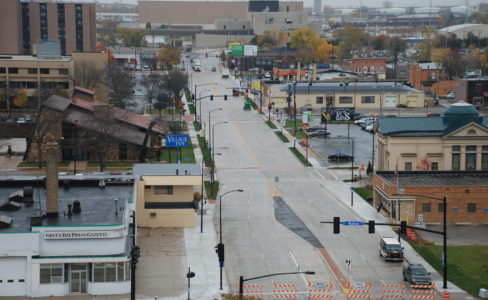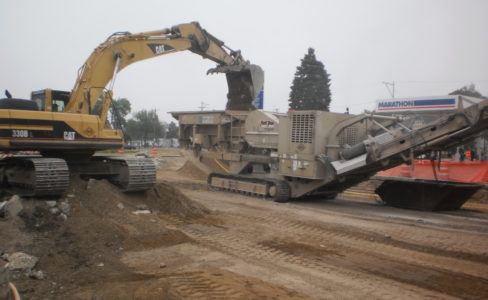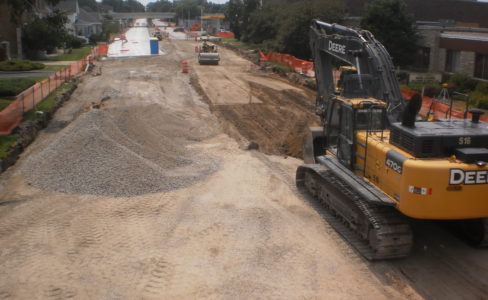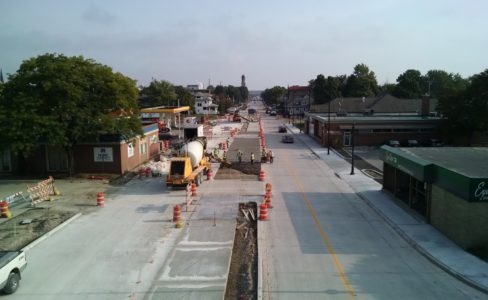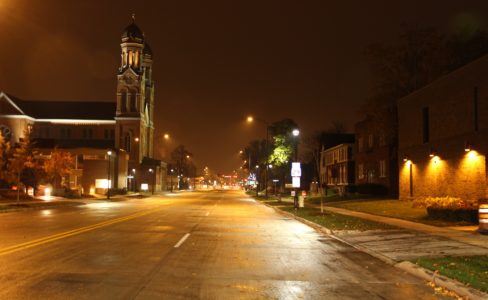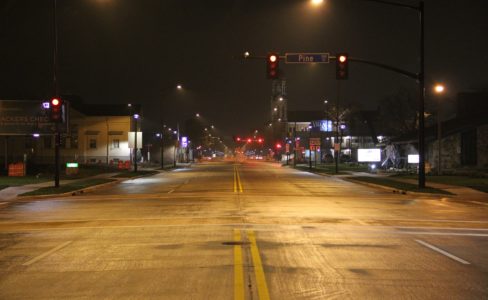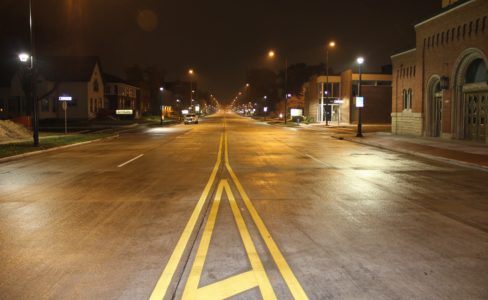Monroe Avenue Reconstruction, Green Bay, Wisconsin
City of Green Bay / Green Bay, WI
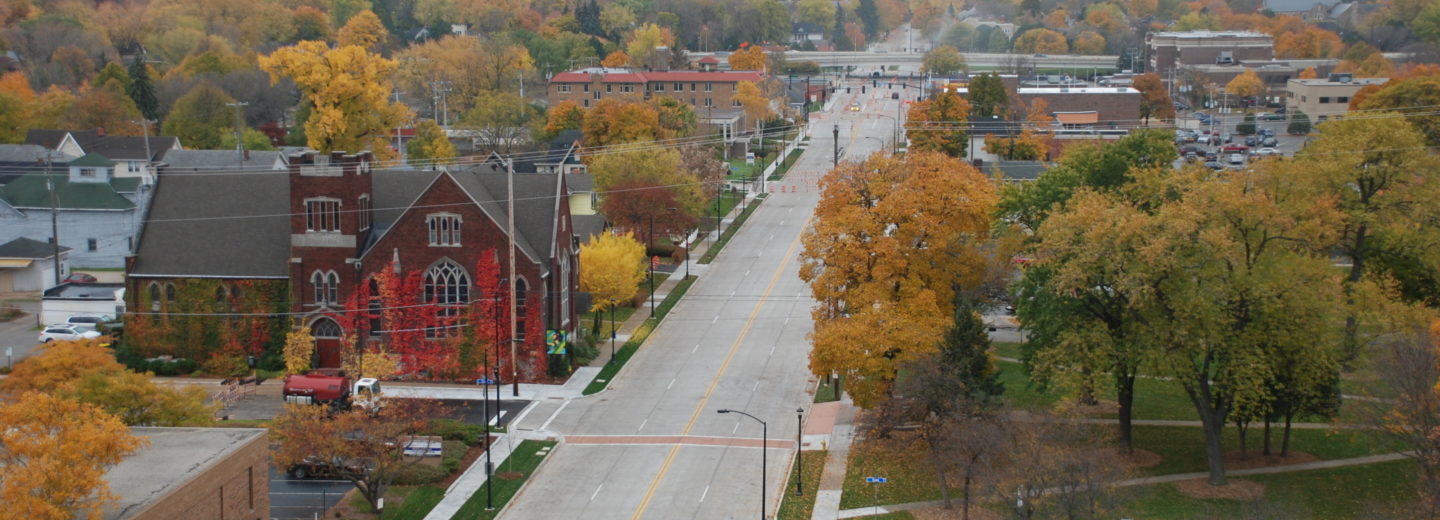
Date Completed:
October 2014
Services:
Design Engineer:
McMahon Associates
Construction Engineer:
Mead and Hunt
Award Won:
 2015 / 26th Annual ACPA Excellence in Concrete Pavement Awards
2015 / 26th Annual ACPA Excellence in Concrete Pavement Awards
Project Summary:
This $5.2 million dollar construction project involved reconstructing a 1.0 mile urban segment of Monroe Avenue from Cass Street to Main Street/USH 141 in the City of Green Bay, Wisconsin.
Contract Amount:
$5,286,000
Project Length:
1 mile
By the Numbers:
- 35,000 SY of 8-inch Concrete Pavement
- 36,900 SY of Removing Concrete Pavement
- 20,000 CY of Excavation
- 1,754 Tons of Petroleum Contaminated Soil
- 15,200 Tons of Base Aggregate
- 10,400 Tons of Breaker Run
- 5,346 LF of Storm Sewer
About the Project
This $5.2 million dollar construction project involved reconstructing a 1.0 mile urban segment of Monroe Avenue from Cass Street to Main Street/USH 141 in the City of Green Bay, Wisconsin.
Constructing portions of the project in stages to maintain traffic to local businesses, schools and residences created significant challenges to complete the project in a timely manner while minimizing the inconvenience to the traveling public. Vinton Construction is well known in Wisconsin for their excellent project coordination, and their extraordinary efforts on the Monroe Avenue project was a key component of the project success. The project was originally designed in two phases however the short time frames and complexity of the work prompted Vinton to develop a phasing plan that consisted of 5 different mobilizations. This allowed them to schedule, coordinate, and sequence concurrent controlling work operations while meeting the requirement to maintain local vehicular and pedestrian access to the businesses within the construction zone while. Two gas stations on the project required coordination for access of fuel deliveries. A post office and the Brown County Central Library were located on the project that required coordination for safe and uninterrupted access. Two schools along the corridor required coordination to provide safe access for children, parents, and busses during school sessions. Similarly, there were four churches and funeral homes along the corridor that generated concentrated volumes of traffic needing coordination for safe access. Vinton Construction scheduled work to maintain pedestrian access on a hard surface via either the west or east sidewalk at all times. Colored concrete cross walks were poured at several major intersections throughout the corridor. The colored cross walks required staging to allow for continuous pedestrian movements, as well as construction traffic. The project called for 15 concrete pavement gaps but Vinton was able to reduce the actual gaps to two with one on one coordination with businesses and staging efforts. This project also required the use 51 miles of detour rerouting for three State Highway routes. Due to the minimal vertical relief throughout the corridor, the contractor had to pay close attention to drainage of the roadway at all times, and especially at intersections to minimize any ponding of water. Electrical work was significant with installation of a new continuous standard street lighting system, decorative pedestrian lighting, signal interconnect and four signalized intersections. Extensive coordination was also required with the city of Green Bay to ensure their standards were incorporated as they are the maintaining authority of this connecting highway.
This high complexity and very tight working day contract was completed ahead of schedule. Vinton Construction delivered a high quality concrete pavement with all materials meeting specification. Overall the project was well designed and the construction personnel on site where seasoned and well organized which made for a smooth running project. Every aspect of the project from conception to completion was carefully thought out, well executed, and a huge success. The WisDOT and the City of Green Bay have a revitalized corridor which will spur business redevelopment for many years to come thanks to the commitment of all parties involved and the use of concrete pavement.
Noteworthy Project Details
- There were five historically significant sites and two archeological sites along the corridor that required extra care and protection from construction operations. The contract required an archeologist to be on site during any earth disturbance operations at or near the archeological areas.
- This was a pilot project for the FHWA Every Day Counts (EDC) Utility Initiative. More coordination and emphasis on investigating potential conflicts was done during design phase of the project. The plan also included Utility Conflict Details and Matrix sheets with a greater level of information than what is historically provided. With the EDC coordination, the typical utility conflicts during construction were vastly reduced compared to past urban reconstruction projects that did not use this initiative.
- A mixture of standard street lighting and low level decorative lighting was installed along the corridor to enhance the lighting of the sidewalk and provide a curb appeal look which was an upgrade from the existing lights on power poles. The lighting systems were designed to match the adjacent city systems. LED signal, lighting, emergency vehicle detection/preemption components and a signal interconnect system were installed to minimize future maintenance and energy operating costs.
